
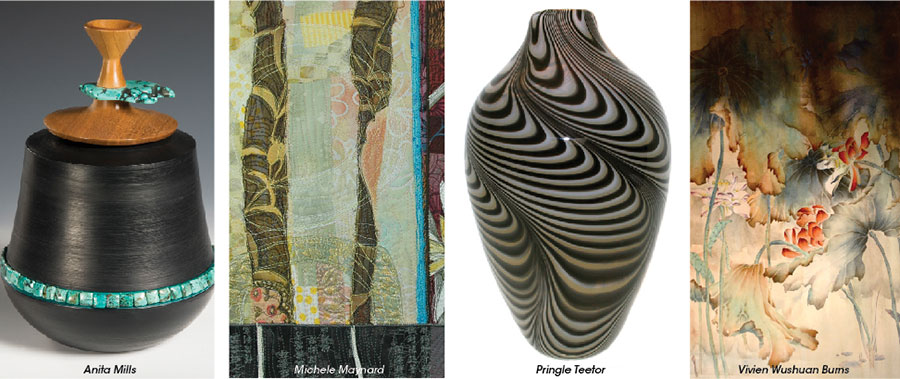
By Judith Ernst
What does Orange County have to offer?
UNC-Chapel Hill and all the cultural and collegiate activities that accompany a major university.
Of course.
Hillsborough, with its quaint, historic downtown and its writers.
Sure.
How about the highest number of artists of all the counties in our state?
It's true! According to a 2007 study commissioned by the N.C. Arts Council, Orange County has the highest number of artists and the second highest per capita.
This vibrant and dynamic visual arts scene is especially evident in the first two weekends in November, when the Orange County Artists Guild (OCAG) holds its annual open studio tour.
With usually perfect weather, the trees just changing color, and artists' studios in stunningly beautiful spots all over the county, it's a great time to soak up the creative energy displayed by those participating in the tour.
What kind of work will you see? Just about everything you can think of!
Here's a small sample of the artists and their work.
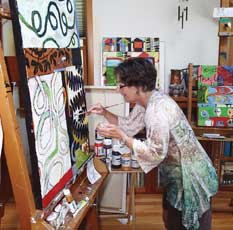 Michele Maynard
Michele Maynard
Textiles, paintings, mixed-media
Whether working with paint, fabric or pages of discarded books, Maynard's work is brightly colored and bold, often underling the drama of the natural world by the use of contrast between lights and darks. While her work can be playful, it's always elegantly composed.
With a BFA from Georgia State and an MFA from the University of Michigan, Maynard has taught at the Oregon School of Arts and Crafts as well as Penland School of Crafts in the Blue Ridge Mountains. Her pieces are in public and private collections on the East and West coasts.
Maynard says of her work (at studio No. 60):
the dart of a hummingbird, the joy of making marks
canoes, the song of a thrush
weird fairytales, the dignity of trees
circles, dots, Southern roots
quilt patterns, mountain streams, the magic of color
the quirkiness of life, books, shooting stars, poke berries
algebra, the fox in the meadow
the delight in the unexpected crazy moment. . .
I lasso a starting point from this mental morass and start painting or making a collage with paper or fabric.
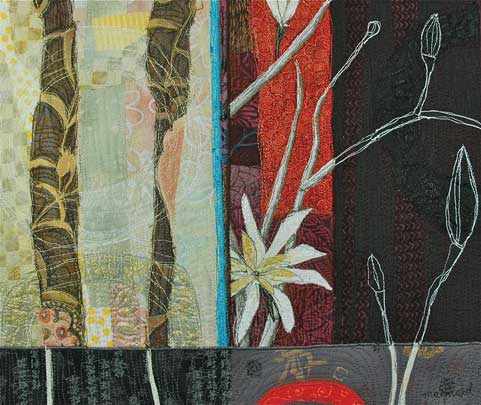
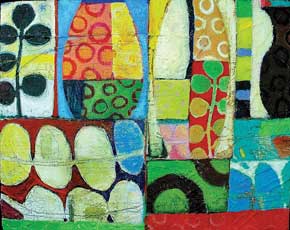
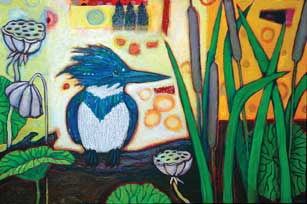
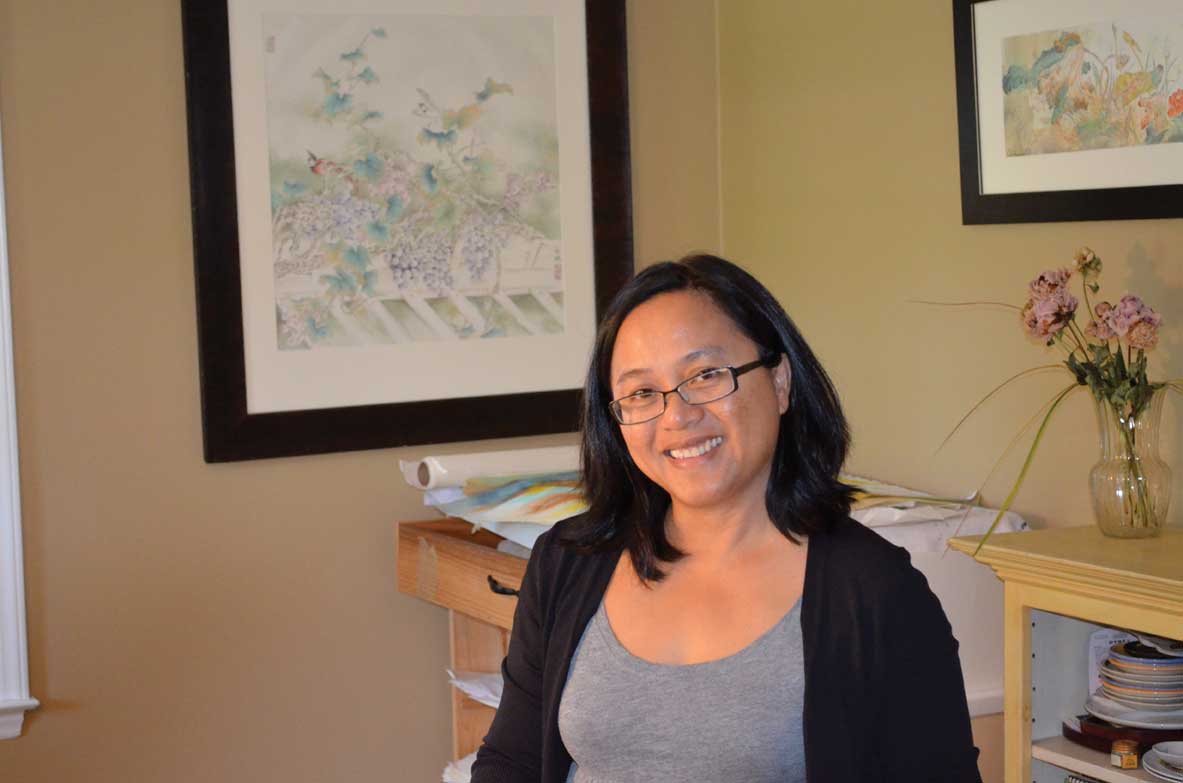 Vivien Wushuan Burns
Vivien Wushuan Burns
Chinese brush painting and calligraphy
Vivien Wushuan Burns was born in a village surrounded by mountains and rivers in the south of Taiwan, where Chinese brush painting and calligraphy were required subjects in school. She showed talent at an early age and dreamed of becoming a professional Chinese brush painter, but as the daughter of a humble forest ranger, these dreams seemed out of reach.
After marrying and moving to the United States, she picked up her brush once again and was invited to study with Taiwanese master painters Lui-Sang Wong and Lu Ching-Yuan. Her work blossomed, with recognition in shows and art periodicals in California, where she lived.
Burns paints with extraordinary detail, and her work is dreamy, soothing and romantic. Her style has broadened to incorporate western watercolor and acrylic paints, pushing the traditional boundaries of her discipline, teasing out playful variations on this ancient art form.
Burns says of her work (at studio No. 55):
I love the method of mental preparation before touching ink to paper. Patient grinding of ink stick against stone; gazing into black liquid while meditating on yet-to-be-revealed forms; moving brushes on delicate rice paper keep the mind still. Scribing calligraphic poetry seals the meditation.
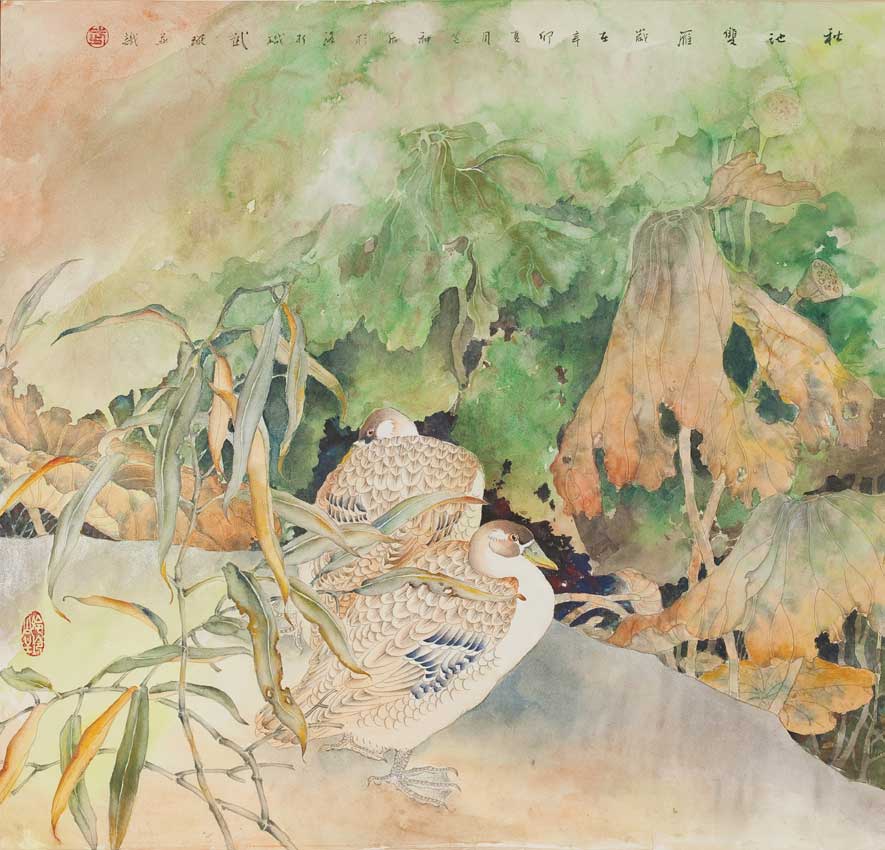
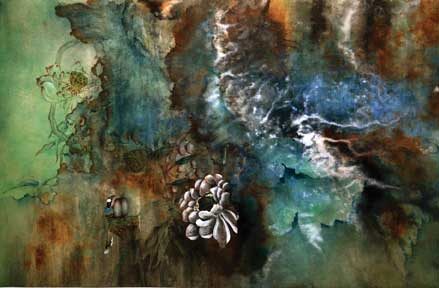
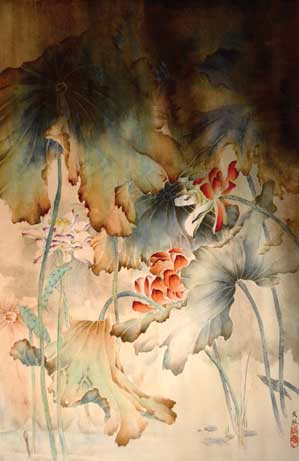
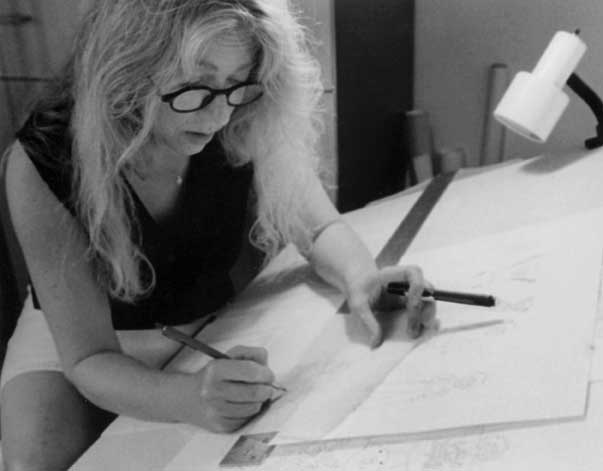 Clay Carmichael
Clay Carmichael
Writing and illustration
Clay Carmichael is the author/illustrator of three picture books ("Bear at the Beach," "Used-Up Bear" and "Lonesome Bear"), an illustrated middle-grade novel titled "Wild Things," and a new young adult novel, "Brother, Brother."
She grew up in Chaple Hill and graduated from UNC.
Carmichael says of her work (at studio No. 31):
Many people tell me that my stories are cinematic, that even when I'm writing I'm visualizing, painting pictures for the reader. This pleases me.
As someone who both writes and illustrates, I know some stories are more effectively told in pictures. Those are the parts I tell in pencil, ink, and watercolor paint in my books and stand-alone paintings.
In every drawing or painting, I'm after both emotional resonance and the essential quality or qualities of whatever's depicted. I seek that essence in form, line, and color; I strive for the truest form and line and the purest color I can manage. I erase or leave out far more than I add.
When I manage to achieve it, this essential quality speaks to the viewer, often more eloquently than words.
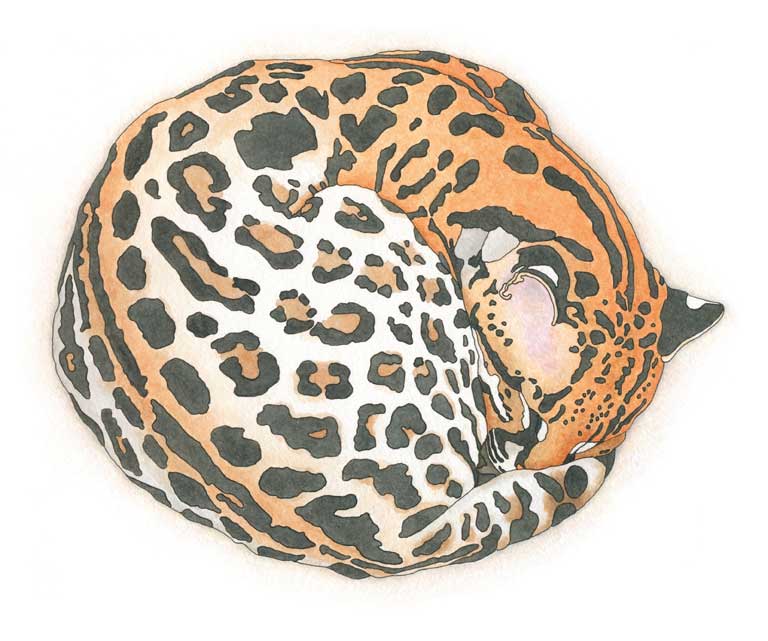
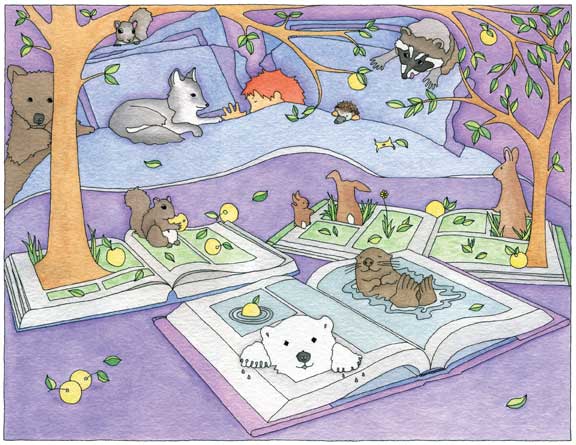
Anita Mills
Ceramics and more
Though primarily a ceramic artist, Anita Mills uses a variety of studio techniques in her work, including relief printmaking, woodturning, blacksmithing and silversmithing.
Lately, Mills has been embellishing many of her ceramic vessels with precious gems, rough stones, shell, bone, feathers, and polished or rusted metals. Additionally, she has included knobs, finials, and lids turned from wood at her lathe.
She's also creating jewelry pieces from ceramic, metals, even found objects.
Mills earned a BFA in ceramics and printmaking from Texas Tech and then an MFA at the University of Texas at Austin. Before moving to North Carolina, she taught in the art department at St. Cloud State University in Minnesota for 12 years, ending her tenure there as department chair.
Now a full-time artist, she still teaches workshops and courses offered in community-education settings.
Mills says of her work (at studio No. 5):
I believe there is still a place in this world for purely decorative objects. In the spectrum of contemporary art there is room for artwork that is the product of an inner journey, or made for the sheer joy of making, or both at once.
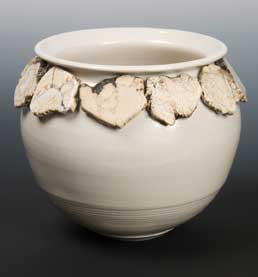
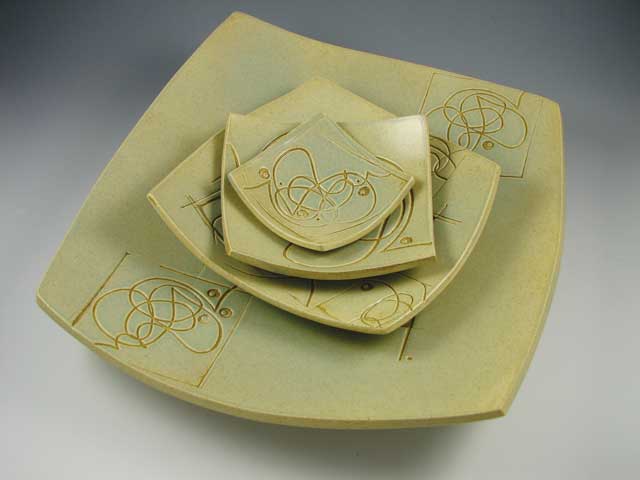
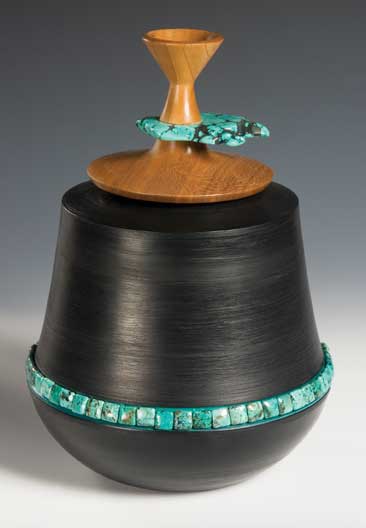
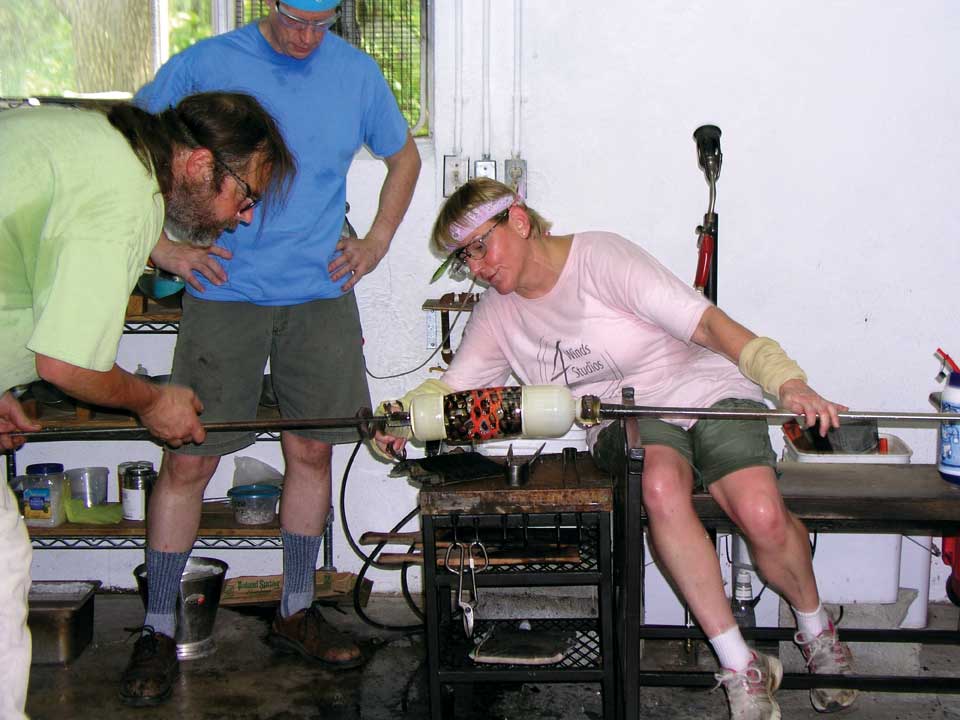 Pringle Teetor
Pringle Teetor
Glass blowing
Calling herself an "accidental glass blower," Pringle Teetor came relatively late to glass blowing from an extensive background studying and teaching ceramics.
Originally from New Orleans, she earned a BFA from Trinity University in San Antonio. Between trips to exotic sites around the world while working as a tour operator, she taught ceramics for many years at the San Antonio Art Institute. After moving to the Tar Heel State in 1995, she took a one-day glassblowing workshop on a whim, and has never looked back.
Teetor has now moved into the complicated technique of murrini glass. Murrine is an Italian term for colored patterns made in a glass cane (long rods of glass) that are revealed when the glass is cut in cross-sections.
Teetor says of her work (at studio No. 44):
I toddled behind my mother in Newcomb College's ceramics studio, where she would plop me down at an old kick wheel. So, the joy of creating something out of spinning clay is my earliest memory as an artist.
Playing in the muddy waters of Louisiana's bayous and Gulf Coast, traveling the world or in the many shades of spring green in woods surrounding our North Carolina home – all is reflected in my work.
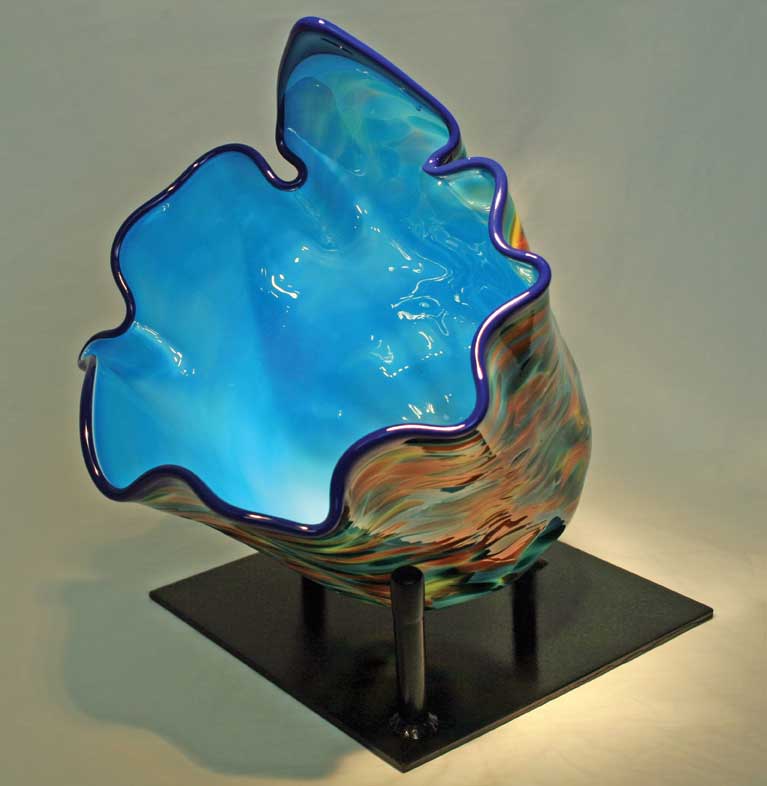
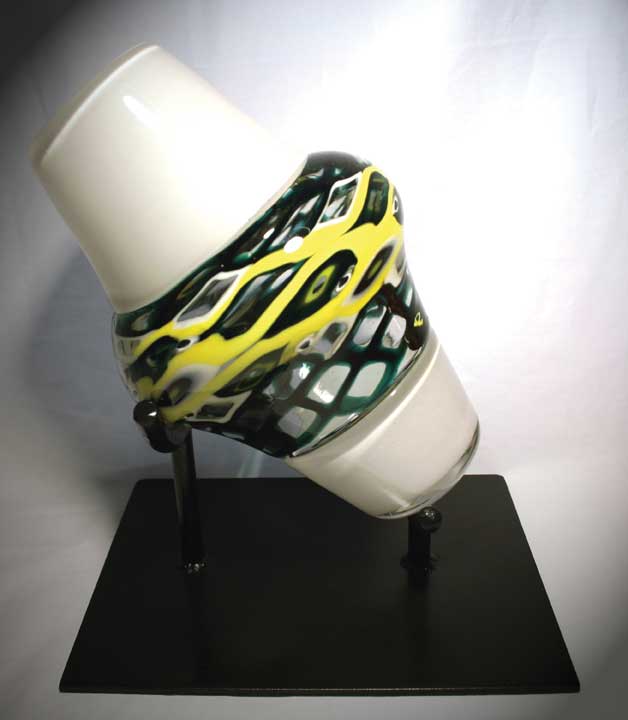
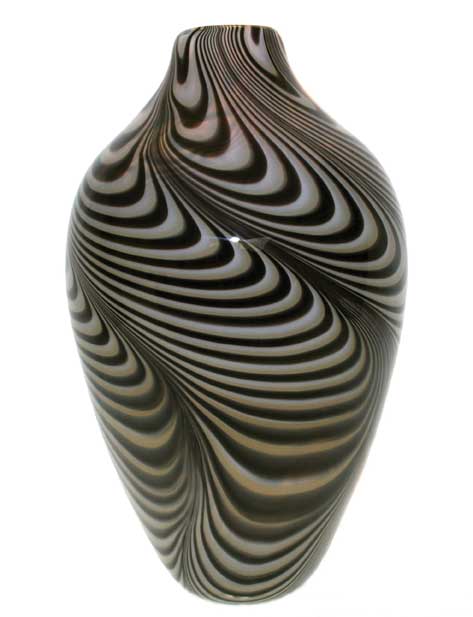
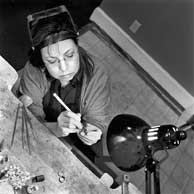 Melissa Booth
Melissa Booth
Jewelry
Melissa Booth travels to hand-pick all of the individual stones for her creations, which feature unusual combinations of gems. Using yellow, rose, white and green gold in combination with colored stones and diamonds, she creates treasures that are timeless in design and crafted for wearability.
While a junior at the University of Wisconsin, Booth was offered the opportunity to work at a custom jewelry store. Finishing her BFA, she continued at the shop for 10 years, climbing from metal polisher to one of the shop's most accomplished designers.
The winner of several design awards from the Wisconsin Jeweler Association moved here in 1998. She's currently a juried member of the Southern Highland Craft Guild, Orange County Artists Guild, Carolina Designer Craftsmen and the Piedmont Craftsmen Guild.
Booth says of her work (at studio No. 10):
A thought, a line in architecture, and the curve of a body stir me into drawing. I sketch my designs out completely before any gold work is done. This process allows me to focus on the asymmetry within each piece and to plan each element with balance and proportion.
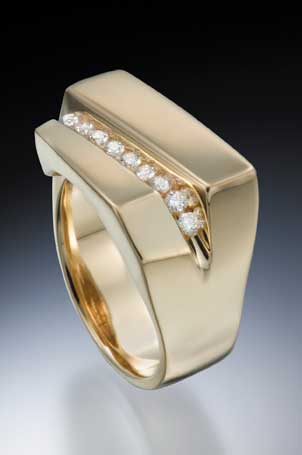
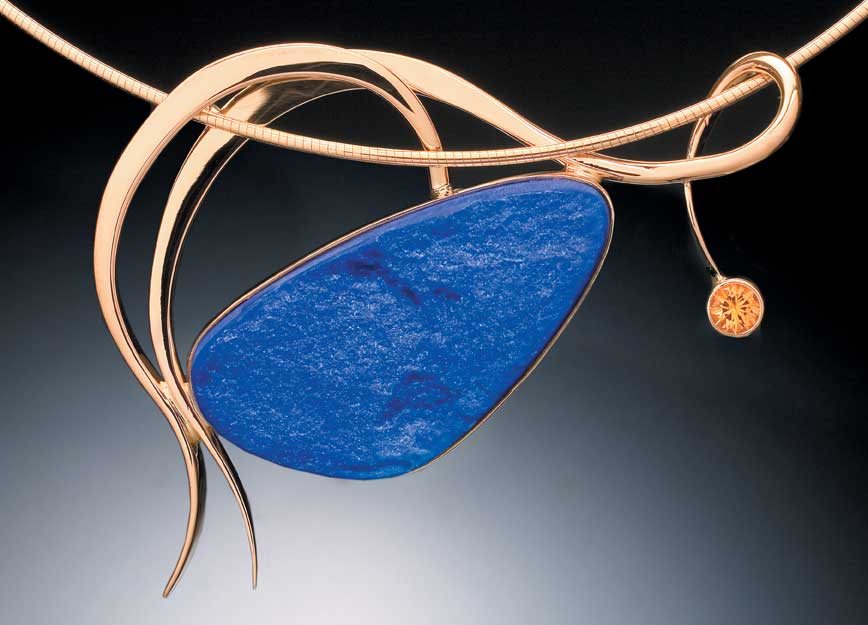
How to navigate the tour?
Pick up a hard copy of the brochure at either FRANK gallery, in Chapel Hill, or Hillsborough Gallery of Art, where an example of each artist's work is displayed. Or see it online at www.orangecountyartistsguild.com.
The brochure includes a map with all the studio numbers. Plus, there's an image and short description of the work, a studio number and contact information for each participating artist.
Plot a course that includes the studios you wish to visit, and hop around for an afternoon or two or three.
The creations are for sale, but the tour isn't just for buyers. It's for anyone who wants to admire beautiful pieces created by local artists.
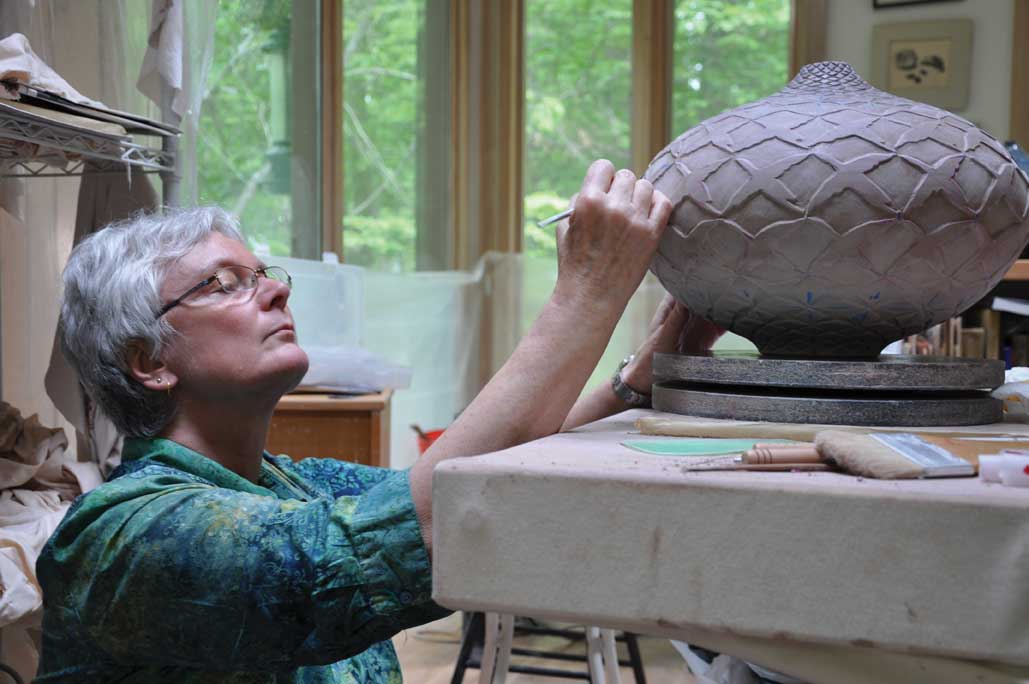 Judith Ernst is a ceramic artist and member of OCAG whose work is at studio No. 63 during the tour.
Judith Ernst is a ceramic artist and member of OCAG whose work is at studio No. 63 during the tour.
More Tours!
Western Wake Artists Studio Tour
Meet the artists in your neigborhood. See how art is created and be inspired.
Twenty-one professional artists in Cary, Apex, Holly Springs and Fuquay-Varina open their home studios on Nov. 8, 9 and 10 for the fifth annual Western Wake Artists Studio Tour.
Visit www.wwast.org for more information and a map of the tour locations.
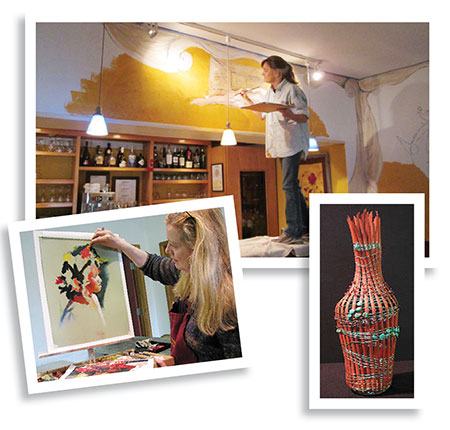
Chatham Studio Tour
During the first two weekends of December, just west of Cary and south of Chapel Hill, discover the diverse artistic talents in Chatham County during the 21st annual tour.
Fifty-two artists invite you into their homes and studios for a unique opportunity to see and purchase their work, including painting, pottery, sculpture, photography, jewelry, woodwork, fiber and baskets.
You can select the artists you want to see by going to a preview exhibit held through Nov. 7 at the PAF Gallery, in Siler City, as well as an opening reception on Dec. 6 at the Central Carolina Community College Gallery, in Pittsboro. Works representing each artist will be on display. Frank Gallery, in Chapel Hill, will hold an exhibit from Dec. 12 through 16.
Go to www.chathamartistsguild.org for brochures, maps and a sample of each artist's work.